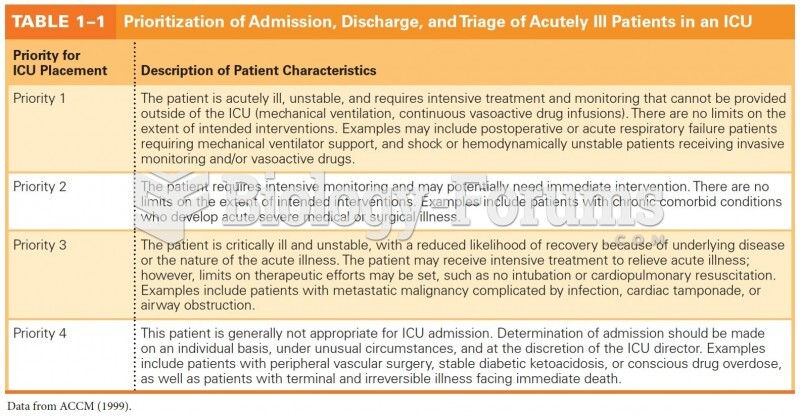Answer to Question 1 Loss of short-term memory and accompanying benign forgetfulness
Poorer performance on complex learning tasks
Slowing of the thought processes
Decreased visual acuity and accommodation can result in decreased ability to process visual cues.
Yellowing and flattening of the cornea can lead to difficulty distinguishing colors.
Fewer functional cochlear cells can lead to a decreased ability to process auditory input.
Answers:
Delirium:b, c, e, f, h
Dementia:a, d, g
Dementia. The onset has been gradual, he has had progressive cognitive impairment (forgetting
things, placing milk in the cupboard, wondering about his daughter, unable to pour coffee, difficulty
remembering names), and he has shown wandering behavior. This behavior does not show the
sudden onset, hallucinations, or incoherent interactions that are more likely to occur with delirium. A
distinguishing feature between dementia and delirium is the onset, with dementia demonstrating a
slow onset, whereas delirium has a sudden onset.
Alzheimer's disease
Diffuse Lewy body dementia
Frontotemporal dementia
Vascular dementia
Parkinson's disease dementia
A psychologist administers neuropsychological testing in the major domains of thinking and
memory, verbal and expressive abilities, constructional skills, and executive functions. This
information helps determine whether the patient can continue to handle his or her own finances, to
drive, or to perform instrumental activities of daily living.
Only the colonoscopy and bleeding time would have no relevance in diagnosing a dementia
disorder.
Answer to Question 2Medical hypnosis is a state of highly focused attention (trance state) in which external stimuli are
diminished and suggestions become far more effective than usual. Changes in a person's behavior,
conduct, or actions are the results of the acceptance by the subconscious mind of suggestions made
during the hypnosis sessions.
Trance state is a perfectly normal and common state that just about everyone has experienced,
such as driving safely to your destination without remembering how you got there or seeing
familiar landmarks. Whenever someone concentrates deeply, he or she automatically slips into the
natural hypnotic state. In hypnosis, the trance state is deepened, enabling the therapist to make
suggestions that might be accepted by the subconscious mind more readily than when a person is in
an unrelaxed state. During hypnosis, people maintain control of their experience; they can come out
of the trance at any time and can voluntarily reject any suggestion that is contrary to their wishes or
beliefs.
The mind is divided into the conscious and subconscious mind. The conscious mind gathers and
analyzes information for storage in the brain's memory. The subconscious mind uses the stored
information to operate the body and govern emotions. The conscious mind is dominant most of
the time. When conscious awareness is lowered, subconscious awareness automatically becomes
dominant. During hypnosis, outside stimuli are reduced and the person enters a trance state. The
subconscious mind accepts the therapist's suggestions as true, as long as they do not conflict with
the person's belief system. The subconscious stores the thoughts and influences the future.
The study of psychoneuroimmunolo
gy, or the study of the mind-body connection, is beginning to
shed some light on how thinking and the body's function are intertwined. Researchers have found
that when a person is asked a question, the subconscious brain continues to search for another or
better answer to the question. For example, people often remember a piece of information after
the conscious mind has stopped thinking about the forgotten information. This is because the
subconscious mind continues to search through memory for the answer. The intent of hypnosis is to
relax learned limitations and permit the subconscious mind to relearn something; it changes one's
thinking to incorporate what one wants to believe in. For example, hypnosis will not help a person
stop smoking if that person really does not want to stop smoking.
Medical hypnosis is very different from stage hypnosis. In stage hypnosis, the hypnotist quickly
selects from the audience those people who can easily and quickly be hypnotized and are highly
suggestible. Direct suggestions can be dramatic but have limited usefulness. Medical hypnosis is
used to remove difficulties, symptoms, and suffering. It uses the beneficial powers of the mind to
search and recall all experiences causing the person's problems. The person's brain recalls the facts in
the development of the problems and then creates suggestions of his or her own that often lead to
the complete and successful removal of difficulties.
People vary in their degree of responsiveness to hypnotic suggestions; this is called their
hypnotizabilityor hypnotic susceptibility.Most people can be hypnotized to some degree. There are
tools that are used to determine a person's hypnotizability: the Penn State Scale of Hypnotizability,
the Stanford Hypnotic Susceptibility Scale, and the Barber Suggestibility Scale. People are rated as
having high, moderate, or low hypnotizability, depending on how they score on the test. The tests
help guide the therapist toward the most effective hypnotic technique.
Preparation and education:The patient is informed of the myths, misconceptions, and benefits of
hypnosis. The key points include (1) the motivation to change must come from within and (2)
hypnotic suggestion must be reinforced by repetition. The patient must practice daily with self-hypnosis techniques; listening to an audiotape of each session will reinforce the desired change.
Establish a rapport and a trusting relationship:Establishing a respectful rapport with the patient
is vital because hypnosis is a cooperative venture. The person has to feel free to be himself or
herself.
Induction and deepening:The therapist assists the patient in achieving a relaxed state of body and
mind so that his or her subconscious awareness can become dominant. This state of hypnosis
is marked by increased muscle relaxation, increased mental focus on the hypnotist's voice, and
increased susceptibility to suggestion.
Hypnotic suggestions:There are many techniques and strategies for hypnotic suggestions, as well as
methods of subconscious exploration and problem solving. The individual is instructed in
self-hypnosis, which allows the hypnotic suggestions to become incorporated into the patient's
own thought system. When the suggestions become the patient's own, they are followed more
readily because desire is enhanced and resistance is reduced.
Hypnosis cannot make you do something you really do not want to do. The literature suggests that
hypnosis is unlikely to be effective when used alone but is effective when part of a multicomponent
program involving hypnosis and counseling, health education, and nicotine replacement therapy.
Hypnosis is contraindicated for those trying to recover repressed memories; those who are afraid of
being hypnotized; those who receive secondary gains from being ill; and those who have dementia,
mental retardation, paranoid characteristics, borderline personality disorder, schizophrenia,
epilepsy, and some types of strokes.
Hypnosis can be done either way, but hypnosis done to gain insight into a particular issue, such as
smoking cessation, is best accomplished in sessions with a certified hypnotist who will tailor the
sessions to the needs, personality, and motivation of those involved. In general, self-hypnosis CDs
will not be as effective. However, using the self-hypnosis audio combined with seeing a hypnotist
can yield better results. A great method for doing this is to see a hypnotist on a regular basis, then
listen to self-hypnosis CDs daily in between sessions.
Most states do not have licensure for hypnotists or hypnotherapists. Certification is available; the
two main certifying bodies are the American Society of Clinical Hypnosis (ASCH) and the National
Board for Certified Clinical Hypnotherapists (NBCCH). Both recommend that when a selecting
someone to help with a particular goal, such as smoking cessation, you choose a provider who is
properly trained and credentialed. Persons credentialed by the ASCH and NBCCH hold graduate
degrees and valid licenses in fields such as medicine, psychology, social work, or nursing. An
additional benefit of choosing a licensed health care provider is that health care insurance may
reimburse for services provided, although you should determine this in advance by contacting the
insurer or asking the provider. It is important to check references from both professional colleagues
and former patients to determine therapist skill and patient satisfaction. Does he or she have
experience with the type of hypnosis you need?
American Psychological Association:
www.apa.org/divisions/div30American Psychotherapy and Medical Hypnosis Association:
http://apmha.comAmerican Society of Clinical Hypnosis:
www.asch.netNational Center for Complementary and Alternative medicine:
http://nccam.nih.gov







